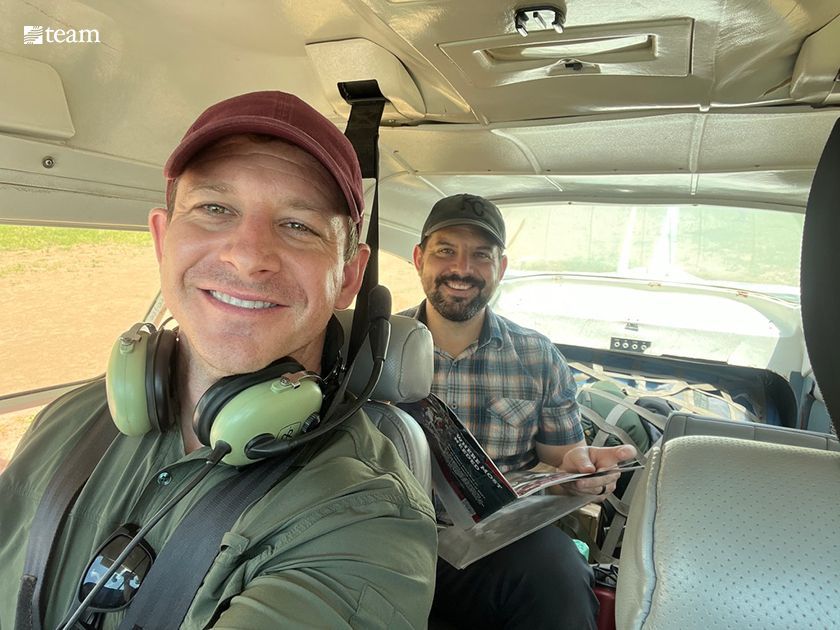10 Steps to Writing a Memorable Missionary Newsletter
Staring at a blank screen when you sit down to write your missionary newsletter? Try out these time-tested tips to make updating your supporters a joy.
This is part one of two-part series on missionary newsletters. Read part two, “How to Design a Beautiful Missionary Newsletter,” here.
It was the kind of moment every ministry worker on a support trip looks forward to: The woman shared how excited she always got to see my blue newsletter envelope in the mail. Then she took me to the church sanctuary and told her friend, You’ve got to meet Beth. She’s been to Asia and Africa and all over the place!
It was great. Except that I’d been to Asia once, my missions organization didn’t send people to Africa and, as a home staff copywriter, I did all my work from a cubicle near Dallas.
Getting people to read your missionary newsletter can be tricky. Getting them to remember what they read can be even harder. But in the world of missions and writing, there are a few time-tested tricks that can help your newsletter do both. Today, in hope of sparing you the awkwardness I once faced, we’re sharing our top ten.
1. Write down ideas throughout the month.
This simple tip fixes a plethora of ministry newsletter hassles. No more hastily throwing together updates because you put it off, because you didn’t have time, because you couldn’t think of what to write. No more hemming and hawing at the beginning (“It’s been so long time since I last wrote, and it’s hard to even know where to start. …”). Keeping a simple log as events happen and thoughts come to mind will help you jump into writing with ease.
2. Be specific about what you’re doing.
Your readers will never know all the details of your work, but they should be able to concretely explain what you do, how, where and why. This not only gives them greater confidence as they invest in your ministry, but it also equips them to share your ministry with others. To them, you won’t be “a missionary I support doing stuff with African orphans.” You’ll be “someone I support who runs a skills training program for aged-out orphans in Zimbabwe. What’s neat about it is …”
3. Write stories.
One of the most engaging ways to be specific? Share a story in your missionary newsletter. The truth is, people don’t connect with numbers, lists or schedules. People connect with people. So rather than listing neighbors you’ve talked to, describe an interaction with one of them: where you were, who they are, pieces of the dialogue, how the relationship has been building.
“Recently I was having lunch with my friend. … Two tables from us was a couple eating. The man came over and said that he knew me and had been to our house twenty years ago. …”
Not only will a story be far more memorable, but it will also give readers something to share with others, and it will help them understand your ministry in a more practical way. No longer are you just sharing missions theory; they’re getting to see how things actually work.
4. Balance personal and ministry news.
As you share ministry stories, be sure to throw in one about your personal life. Yes, people support you to fill a ministry role. But they also support you because, at some point, they decided they like you as a person. So let them know how you are doing. Are you making friends? Have you been sick? How are the kids doing in school?
Even if you never hear the same news back from them, they will feel like they know you better, and that connection will encourage long-term, heartfelt support.
5. Don’t preach, but share.
You’ll learn a lot while working in ministry and living in an unfamiliar setting. And it’s natural that you’ll want to share that. But be careful about how you do it. People generally don’t respond well to preaching, but they are open to hearing about your personal experiences of growth.
When you want to share something you’ve learned, imagine sitting down for coffee with a good friend. What anecdotes or struggles would you share? What weakness would you admit you still have? How would you ask for prayer? How would you invite them into the conversation? Preaching tells others they still have a ways to go. Sharing invites others to journey and grow with you.
6. Be vulnerable.
Missionaries face a lot of pressure to be perfect, but you don’t have to add to it by only sharing your triumphs. In fact, sharing only the good times can be immobilizing for a support team. How do you pray for someone with no problems? How do you encourage someone who’s never had a bad day? Why send extra money to someone with no needs?
Remember that you are writing to a group of people who chose to support you. Give them the chance to do their job well by writing an honest missionary newsletter.
7. Practice continuity.
Part of letting supporters do their job well means updating them on what you wrote before. Make a note of what prayer requests you’re sharing so you can update readers in later missionary newsletters. When you share a story about someone, look for opportunities to share a sequel.
Doing so will keep people from feeling like they’re praying into a void and will make them look forward to future letters. Even within individual newsletters, you can aid your readers by summing up main prayer requests in call-out boxes.
8. Make things bite-sized.
The more often you write missionary newsletters, the easier this becomes, because you know you’ll have future opportunities to communicate. You may have a lot to share, but fire-hosing your supporters can unintentionally sway them from reading any of it.
In our fast-moving world, people are intimidated by long blocks of text. So break things up into short, digestible sections. Use bullet points. Use subheadings. Limit your word count on each subject. It may seem like you’re getting to say less, but your supporters will read more.
9. Make your captions count.
It may be unfair, but after all the work you put into your missionary newsletter, some people will only read your photo captions. Don’t waste them. Instead of listing names of people in a picture, write a full-sentence caption that describes who the whole group is and what they’re doing.
“This crew of college students meets at our house every Thursday for a study on the book of John. Last week, Rosa (far left) stayed late and received Christ!”
At bare minimum, a good caption gives people a hint at what you’re doing. At best, it pulls skimmers into the rest of the story. Either way, you and your supporters win.
10. Thank your supporters.
If you look over your missionary newsletter and you haven’t thanked your supporters in some way, you aren’t done writing. Very few missionary supporters are in danger of being over-thanked, and it’s easy for them to lose sight of how much your work depends on them. Thank them often, and tell them why you’re thankful.
“With that, all of you came to my mind. How you’ve sacrificed money from your salary, time from your schedule, even given us your blessing to move far away from you to the other side of the world (here’s looking at you, Mom and Dad) to join in what God invited us to do.”
Let your supporters know as much as you can that they are more than a paycheck to you. Make them feel appreciated, and they will appreciate you even more.
At the end of the day, remember why you’re writing to these people: They care about you, and they want to be part of your work. Your newsletter is all about letting them do that in the best — and most informed — way possible. Happy writing!
If you’re still hungry for more tips, check our follow-up post on newsletter design and them follow our Pinterest board for even more missions resources.



TEAM's mission:
To partner with the global Church in sending disciples who make disciples and establish missional churches to the glory of God.
© TEAM 2023 | All Rights Reserved
Powered by
Solertiae Sites

















